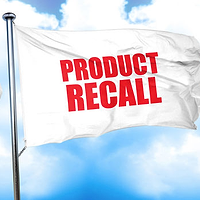Drive out fear.
If you are familiar with the work of legendary management consultant, W. Edwards Deming, this phrase is nothing new.
Sadly, few managers and leaders in North America are aware of his contributions to the modern business world—a fact that is especially troubling for food safety professionals.
At the root of it, food safety is about the creation and handling of quality products using quality inputs and quality processes. And W. Edwards Deming is widely acknowledged as the ‘Father of Quality.’ In fact, the national award for quality in Japan is the Deming Prize.
The Back Story
W. Edwards Deming finished his university education in 1928 with degrees in engineering, mathematics and physics. It was during this period, while a Ph.D. candidate at Yale, that he would spend his summers working for Western Electric where he had his first encounters with scientific management, productivity and working conditions.
Deming turned down a number of employment offers from private companies—including Bell Laboratories—to work for the U..S Department of Agriculture and, later, the U.S. Census Bureau. It was during this time that Dr. Deming was introduced to Walter Shewhart, a statistician who is known as the ‘father of statistical control.’
WWII
His prominence in the world of production, quality and statistical control began during World War II when he was tapped to lead the effort to teach Shewhart’s methods to the engineers and managers in the factories that were straining to meet the demand for war materials.
 Ultimately, Dr. Deming and his group trained over 31,000 students in the use of these tools, and resulted in the formation of the American Society for Quality Control—now ASQ.
Ultimately, Dr. Deming and his group trained over 31,000 students in the use of these tools, and resulted in the formation of the American Society for Quality Control—now ASQ.
Recovery in Japan
As post-war manufacturing in America ramped up to meet rapidly expanding global demand, most executives were focused on production capacity with quality initiatives taking a distant backseat. Dr. Deming was largely forgotten at home, but continued to be in demand on the international stage—being contracted to assist with recovery efforts throughout Europe and, eventually, in Japan.
It was in Japan that he found a truly receptive audience. As a result of the overall poor quality of their products, the leaders of the Japanese manufacturing sector were struggling to make headway in the export markets. It was armed with Deming’s management methods and his statistical approach to process variance that Japanese industry was able to emerge from the post-war ash bin to become the bellwether for quality products worldwide.
In fact, the Toyota Production System, which led to the Total Quality Movement and, subsequently, Six Sigma, evolved directly from the techniques that Dr. Deming implemented during the Japanese reconstruction.
America Falls Behind
Eventually, as Deming predicted, the U.S. manufacturing sector was screaming for protections from the Japanese. American products simply could not approach the level of quality that was built-in to the Japanese competition, and no one had a good answer as to how things could be turned around. That answer turned out to be living in an unpretentious neighborhood about five miles from the White House. Dr. Deming, at 80 years of age, became the prophet who was, at last, recognized in his own land.
American companies scrambled to hire him to consult or to attend one of his four-day workshops. And some of the things that they heard must have seemed as if Marx himself had been hired to show them the error of their ways.
Many consider the genius of Dr. Deming to be his successful application of statistical tools to real-world production and service environments. And in that assessment, he would most certainly disagree.
While his mission to create lasting improvement began with statistics, it was his perspective on management—and those who practice the ‘science’ of management—that separated him from nearly everyone else.
He that starts with statistical methods alone will not be here in three years.
- W. Edwards Deming
As a result, Deming codified his philosophy of management in “The Fourteen Points”, “The Seven Deadly Diseases”, and “The Obstacles”[1]
The 14 Points
1. Create constancy of purpose for improvement of product and service. There it is, right in point one that Dr. Deming diverges from the modern, Western approach to management. While nearly every corporation lives by the ethos of “maximizing shareholder value,” Deming advanced the idea that companies worry less about making money, and concentrate on staying in business and providing jobs by focusing on innovation, research, constant improvement, and maintenance.
2. Adopt the new philosophy. Companies are typically too tolerant of poor workmanship and service.
3. Cease dependence on mass inspection. Inspecting products at the end of the process is expensive and creates unnecessary waste. Quality emerges from improved process, not from additional inspection.
4. End the practice of awarding business on price tag alone. This almost always results in poor quality of inputs. And quality outputs are very difficult to generate from poor inputs.
5. Improve constantly and forever the system of production and service. Improvement is not a one-time effort. Everyone, especially management, must be committed to ongoing improvement.
6. Institute training. Most workers are taught their jobs by peers who don’t thoroughly understand what is happening in the system. Most have just figured things out on their own.
7. Institute leadership. The job of a supervisor is not to tell people what to do or to punish them. It is to state a clear vision of the future and provide the guidance and instruction to those who need help.
8. Drive out fear. Many employees are afraid to ask questions or to take a position, even when they do not understand what the job is or what is right or wrong. People will continue to do things the wrong way, or not do them at all. The economic loss from fear is appalling. It is necessary for better quality and productivity that people feel secure.
9. Break down barriers between staff areas. The silos that exist between departments or units often result in competition or in goals that conflict. They do not work as a team, and may actually cause trouble for each other.
10. Eliminate slogans, exhortations, and targets for the workforce. These never helped anybody do a good job. Let people put up their own slogans.
11. Eliminate numerical quotas. Quotas take account only of numbers, not quality or methods, and are usually a guarantee of inefficiency and high cost. A person, to hold a job, meets a quota at any cost, without regard to damage to the company.
12. Remove barriers to pride of workmanship. People are eager to do a good job and distressed when they can’t. Misguided supervisors, defective materials, or poor processes stand in the way.
13. Institute a vigorous program of education and retraining. Both managers and the workforce will have to be educated in the new methods, including teamwork and statistical methods.
14. Take action to accomplish the transformation. It will take a special senior management team, with a plan of action, to carry out the quality mission. Neither the workers nor the managers can do it on their own. A critical mass of people must understand the Fourteen Points, the Seven Deadly Diseases and the Obstacles.
 The 7 Deadly Diseases
The 7 Deadly Diseases
1. Lack of constancy of purpose. A company that is without constancy of purpose has no long-range plans for staying in business. Management is insecure, and so are employees.
2. Emphasis on short-term profits. Looking to “maximize shareholder value” undermines quality and productivity.
3. Evaluation by performance, merit rating, or annual review of performance. The effects of these are devastating—teamwork is destroyed, rivalry is nurtured. Performance ratings build fear, and leave people bitter, despondent, and beaten. They also encourage mobility of management.
4. Mobility of management. Job-hopping managers never understand the companies that they work for and are never there long enough to follow through on long-term changes that are necessary for quality and productivity.
5. Running a company on visible figures alone. The most important figures are unknown and unknowable—the multiplier effect of a happy customer for example.
6. Excessive medical costs. (only applies in the U.S.)
7. Excessive cost of warranty, fueled by lawyers that work on contingency fee.
And Some Obstacles
• Neglect of long-range planning and transformation.
• The supposition that solving problems with automation, gadgets, and new machinery will transform industry. New technologies are rarely the solution to quality and process problems.
• Searching for examples used elsewhere that can be copied, rather than finding solutions internally.
• “Our problems are different.”
• Blaming the workforce for problems.
Workers are responsible for only 15 percent of the problems, the system for the other 85 percent. The system is the responsibility of management.
- W. Edwards Deming
• Meeting specifications. The accepted practice, but it will never drive improvements in quality or productivity.
• “Anyone that comes to try to help us must understand all about our business.” It is possible to know everything about a business except how to improve it.
Obviously, Dr. Deming had a number of opinions that were, and continue to be, contrary to the ‘accepted’ way of doing business in Western society.
His approach to running an organization is at odds with the way most of us have been conditioned to view the food production process. Yet here we are, 63 years after his lectures to the engineers, scientists, and managers of Japan turned that country into the gold standard for quality manufacturing, and many of us who are trying to create safe food products still don’t understand the basics of variance, or the steps that managers must take to engage their employees in producing safe products.
If all this talk of variance vs. process vs. management sounds like nonsense to you, here is a demonstration of Dr. Deming’s “Red Bead Experiment”—from the Mayo Clinic—that will make it less hypothetical.
Or, to see Dr. Deming himself in action, this short YouTube clip is quite fun.
Geoff Schaadt, M.Sc., M.B.A., is a consultant with Delta Partners.
Reference
1. This content is sourced primarily from The Deming Management Method by Mary Walton, (Perigee Books, 1986). A text written with significant first-person input from Dr. Deming.
>









